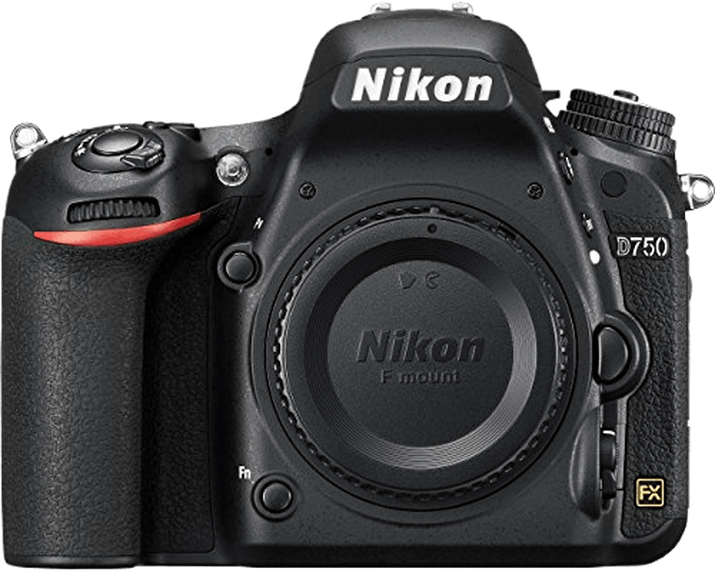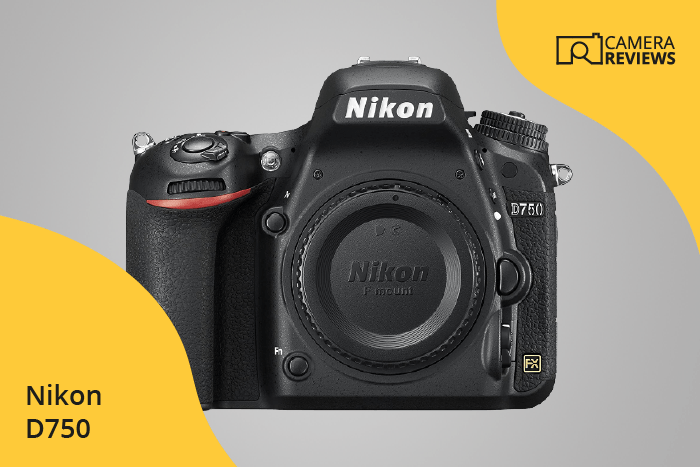Nikon D750 Specs and Scores

The Nikon D750 scores a solid 68/100, boasting impressive specifications for a DSLR released in 2014. Priced at $2300 upon launch, the camera measures 141 x 113 x 78mm and weighs 750g (1.65lbs). Given its age, the D750 still holds up well in today’s market, offering users a reliable and user-friendly experience. It’s clear that this camera maintains its value and remains a competitive choice for photographers seeking a quality DSLR.
Nikon D750 Overview and Optics
The Nikon D750 receives a score of 71/100 for its optics. With 24.3 megapixels, a shooting speed of 6.5 frames per second, and a full-frame CMOS sensor, the camera captures high-quality images. The Expeed 4 processor allows for efficient processing and a DXOMARK score of 93 for the sensor showcases the camera’s excellent performance.
Compatibility with the Nikon F FX lens mount provides a wide range of lens options, yet the absence of image stabilization requires the use of stabilized lenses or a tripod for steady shots. The 3:2 aspect ratio is standard and suitable for most photography purposes.
Despite being a few years old, the Nikon D750 still competes well in today’s market. Its solid performance and compatibility with a variety of lenses make it a reliable choice for photographers seeking a full-frame camera. However, the lack of image stabilization may be a drawback for some users.
Nikon D750 Video Performance
The Nikon D750’s video capabilities receive a score of 56 out of 100. The camera offers Full HD video resolution with maximum dimensions of 1920 x 1080 pixels. It supports a maximum video frame rate of 60fps, providing smooth footage for various shooting scenarios. However, the D750 does not have built-in time-lapse functionality, which may limit its appeal for some users.
In today’s market, the Nikon D750’s video features fall behind the 4K resolution offered by many competitors. The absence of built-in time-lapse functionality further reduces its competitiveness. Therefore, while the D750 provides satisfactory video performance for casual users, those seeking advanced video capabilities may need to consider alternative options.
Nikon D750 Features and Benefits
The Nikon D750 scores 59/100 in the features department. With a 3.2-inch screen and a resolution of 1,229,000 dots, the display is clear and sharp. However, it lacks a touchscreen, which is a common feature in modern cameras. The flip screen adds flexibility to shooting angles, but the absence of GPS functionality may deter some users.
WIFI connectivity is included, making it easy to transfer images to devices, yet it does not have Bluetooth capabilities. Considering current market trends, the Nikon D750’s features are a mixed bag, with some useful additions and notable omissions.
The Nikon D750 offers a decent set of features, but it falls short when compared to its competitors in today’s market. It is essential to weigh the pros and cons of this camera before making a purchase decision.
Nikon D750 Storage and Battery
The Nikon D750 storage and battery receive a score of 79/100. This camera provides two memory card slots that accommodate SD, SDHC, and SDXC cards, allowing for ample storage and flexibility in managing files. In today’s market, having multiple card slots is an advantage for professional photographers who require backup or additional storage.
The D750 uses an EN-EL15 battery, which delivers an impressive 1230 shots per charge. This battery life competes well with other DSLR cameras in the market. However, the camera lacks USB charging capabilities, which is a drawback for those who need convenient charging options.
Considering the storage and battery specifications, the Nikon D750 offers solid performance in these aspects, making it a reliable choice for photographers.
Nikon D750 Alternatives
Do you want to know how the Nikon D750 compares to its competitors? Have a look at the most popular comparisons for this camera below:
- Nikon D750 vs D800
- Nikon D750 vs Z5
- Nikon D750 vs D850
- Nikon D7200 vs D750
- Nikon D750 vs D7500
- Nikon D750 vs D810
Nikon D750 FAQ
Does the Nikon D750 Have Built-in Image Stabilization?
Unfortunately, the Nikon D750 does not have built-in image stabilization. However, it does support Nikon lenses with VR (Vibration Reduction) technology for stabilized shooting.
Does the Nikon D750 Support 4K Video Recording?
No, the Nikon D750 does not support 4K video recording. The maximum video resolution it offers is Full HD 1080p at various frame rates.
What Size Sensor Does The Nikon D750 Have?
The Nikon D750 features a full-frame 24.3 MP FX-format CMOS sensor, which delivers exceptional image quality and low light performance.
Does the Nikon D750 Have a Dual Memory Card Slot?
Yes, the Nikon D750 is equipped with dual SD memory card slots, allowing for extended storage capacity and backup options.
Does the Nikon D750 Have a Touch Screen?
No, the Nikon D750 does not feature a touch screen. However, it has a 3.2-inch tilting LCD monitor for easy menu navigation and image review.
Does the Nikon D750 Have Wi-Fi and Bluetooth?
The Nikon D750 includes built-in Wi-Fi for wireless image transfer and remote camera control, but it does not have Bluetooth connectivity.
Does the Nikon D750 Have GPS?
No, the Nikon D750 does not have built-in GPS functionality. However, you can add GPS data to your images using optional external GPS units.
Is the Nikon D750 Weather Sealed?
Yes, the Nikon D750 features a weather-sealed body, which provides protection against dust, moisture, and some degree of shock, making it suitable for various shooting environments.
Does the Nikon D750 Have a Built-in Flash?
Yes, the Nikon D750 includes a built-in pop-up flash, which is useful for fill flash and basic lighting scenarios.

